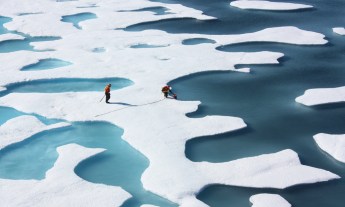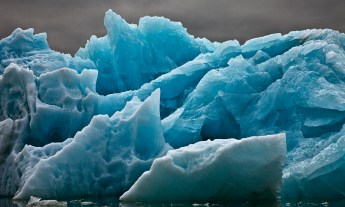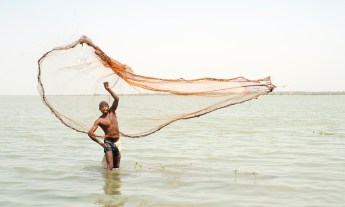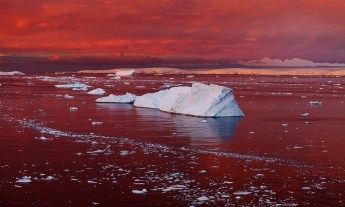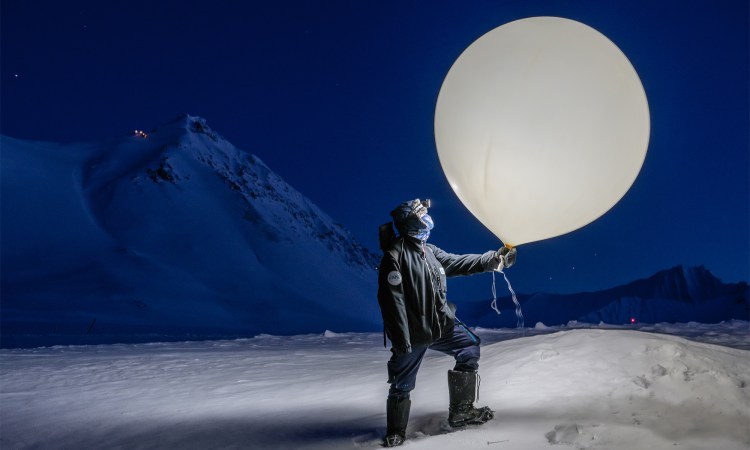
You might think that you’ve traveled — and even worked — under challenging conditions before. But could you spend four months trekking through 24/7 darkness in -40 degree Celsius weather while surrounded by polar bears and armed only with a camera and headlamp?
That’s exactly what Alfred Wenger Institute photographer Esther Horvath braved in 2019 in order to document the Multidisciplinary Drifting Observatory for the Study of Arctic Climate (MOSAiC) — the largest polar expedition in history.
The mission involved a rotating group of 442 experts dedicated to mapping and analyzing the undiscovered Arctic climate system. “There were five distinct disciplines on this expedition: atmospheric, sea ice, oceanographic, Biagiochemistry and ecosystem,” she says. “They worked together to understand the changes in the Arctic to be able to create a better prognosis for the future.”
Currently, the Arctic is warming at twice the rate of the global average. Scientists know that Arctic sea ice and the Arctic climate system have a massive impact on the rest of Earth’s climate systems, so it’s essential to better understand them so they can make more accurate predictions for the Arctic as well as for the rest of the world. Sea ice, for example, serves several crucial functions. Thicker, older sea ice acts as an insulating barrier that traps heat in the ocean and keeps it out of the atmosphere. On the other hand, thinner ice melts more easily. This not only releases more heat and contributes to global sea level rise, but it can also alter the nutrient balance of the sea that many marine animals depend on.
Horvath has endured harsh Arctic conditions 13 times as a photographer, and she’s learned valuable lessons along the way. “At a certain temperature, if you touch metal, you would immediately get frostbite on your hand — it’s immediate pain,” she says, adding that she was outside six to eight hours per day on the MOSAiC expedition. “Your body gets used to this temperature. At the beginning, it always feels much colder but still, for the hands, it’s super painful.”
Despite the intense physical endurance required to use a camera and take photos, Horvath succeeded in capturing a striking collection of images that give us a lens into these widely uncharted polar landscapes.
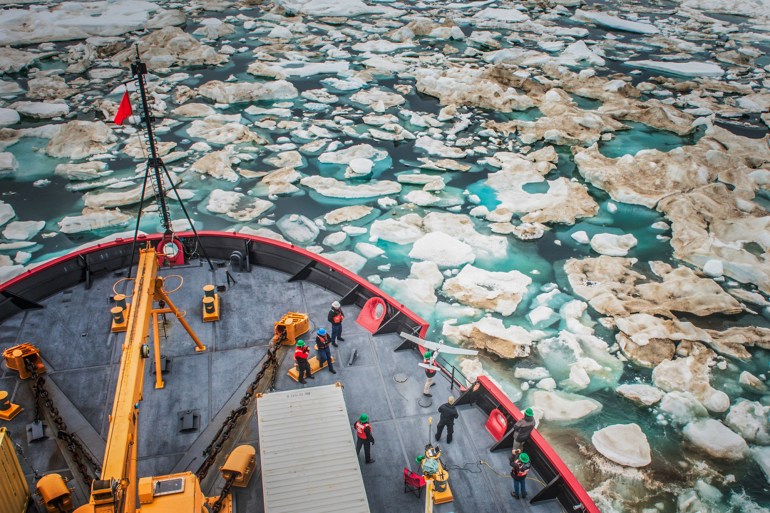
In 2015, for her first Arctic assignment, Horvath joined the crew of the US Coast Guard icebreaker ship, pictured above, to document the team’s launch of the Puma drone, a surveillance tool that uses an electro-optical and infrared camera to chart the land area and measure data from events like oil spills. Up to that point, she had spent her career photographing different teams as they worked together. From the New York City Fire Department to biologists rescuing sea turtles, her work generally focused on collaboration, but this was the first time she was photographing science that didn’t involve animals.
To fully capture the magic of the research being done on the icebreaker, Horvath quickly realized that she needed to master a vast litany of Arctic terms, abbreviations and jargon. “Every night, there was a scientific meeting with scientists using scientific terms,” she recalls. “I was sitting there taking notes, trying to learn as fast as possible.”
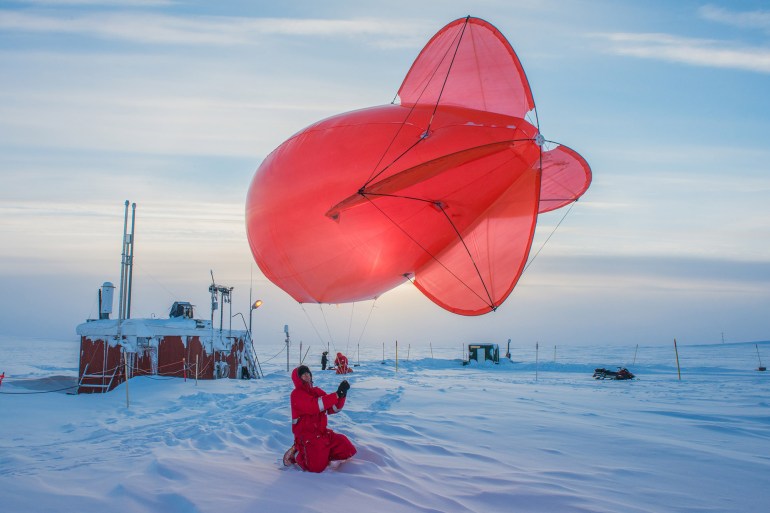
This red balloon, lovingly named “Miss Piggy,” measures wind turbulence, terrestrial and solar radiation, and black carbon near Station Nord, the northernmost base of Greenland. In 2016, after the successful completion of her first Arctic mission, Horvath accepted a position as a science photographer for the Alfred Wenger Institute (AWI), which is headquartered in Bremerhaven, Germany.
This research center is dedicated to the Arctic, Antarctic, high- and mid-latitude oceans, and it sends scientists to the remote Station Nord twice a year to take measurements of the Arctic Ocean sea ice and other physical features. Over the years, that data has shown a 30 percent decrease in ice thickness during the summer months. The interdisciplinary nature of the institute’s work has also provided an ideal opportunity for Horvath to document scientific cooperation on the ground. “Different groups work together because climate change is so complex,” she explains. “We cannot talk only about atmosphere — we also have to talk about the ocean, we also have to talk about the sea ice. The groups talk together, and we all work together.”
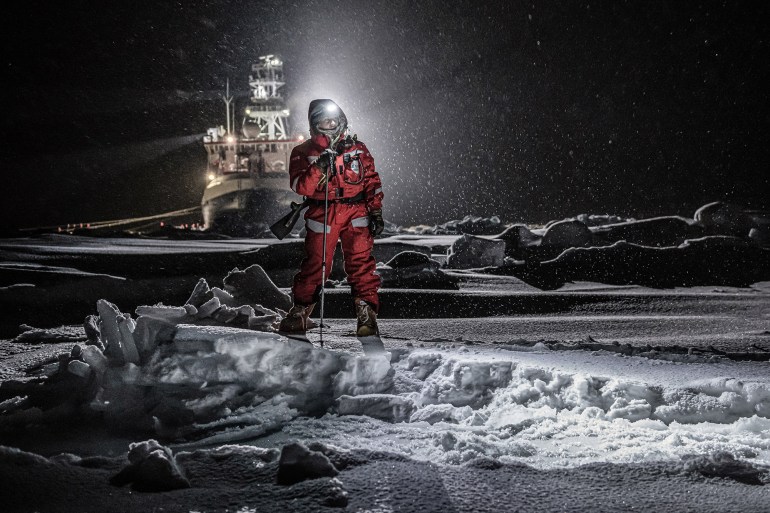
After she had a few Arctic trips under her belt, Horvath was sent in 2019 by the AWI on the MOSAiC expedition to capture what life looked like on board. This was also her first time traveling during the sunless winter months, forcing her to photograph without using natural light. To take high-quality images, she often turned off her own headlamp and stumbled through the dark using only the illumination she got from other people’s lights. “I was on sea ice for six to eight hours fully focused and constantly hunting for this light to be able to take a good photo,” she says.“I wanted to have the light coming from somewhere else, not from my point of view, so it was like I was always in the complete darkness.”
Freezing and isolated, this polar bear guard (shown above) followed close behind every group of experts as they carried out their daily research in front of MOSAiC’s Polarstern ship. Don’t worry — their gun is carried only as a last resort — and they are equipped with other non-lethal tools (such as a flare gun) to scare off the dangerous carnivores.
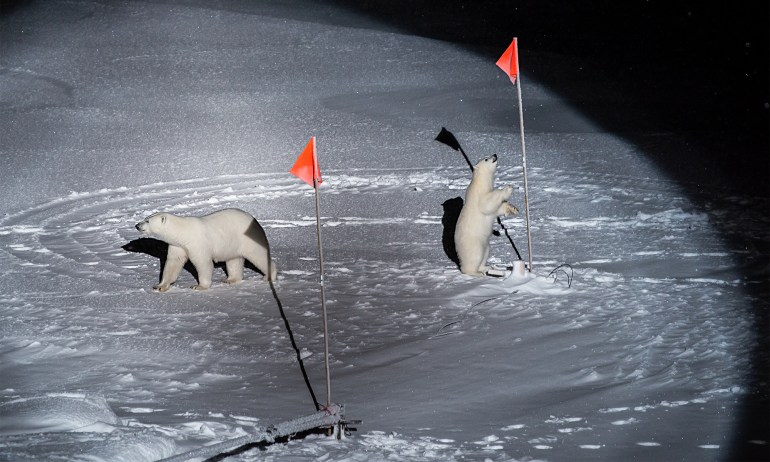
Early on in the MOSAiC expedition, Horvath spotted a mother polar bear and her inquisitive cub from the research vessel. She immediately knew she was witnessing a special moment. “I wanted to photograph polar bears in their environment but also show that we are there for scientific research,” she says, adding that the photo reminds her of the iconic Moon landing photo with astronauts Neil Armstrong and Buzz Aldrin.
She quickly captured this image, deliberately including the flag markers to communicate the scientists’ relationship to the landscape. “It is the polar bears’ home; it is their land,” she explains.“We as humans are there to understand their future, to research their future and research our future. I just wanted to show you one picture of these layers.” This photo went on to win the 2020 World Press Photo contest in the environment category.
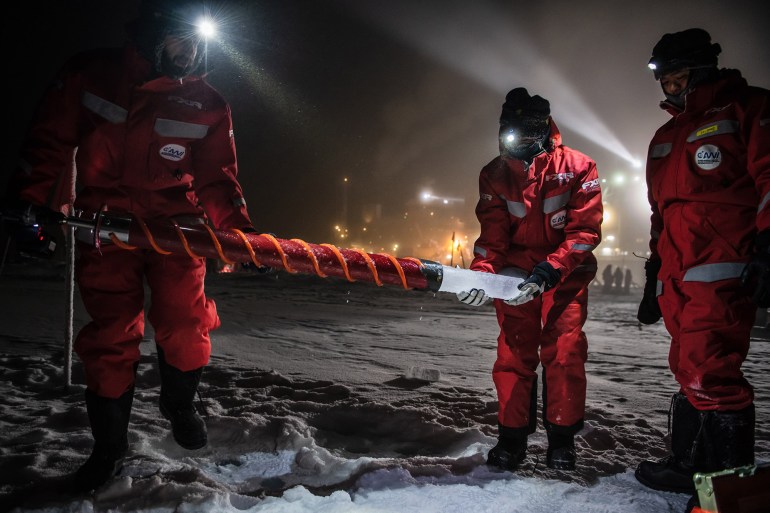
Layers were a common theme throughout the expedition. Layers of ice cores, for example, were extracted to gather information about past environmental conditions in the Arctic. The deeper this drill went, the more ice layers could be gathered and the farther back that scientists were able to study.
And even though the scientific research shown here might seem confusing and unfamiliar to most of us, Horvath hopes that they also spark a lively sense of curiosity in people and a desire to learn more. ”When we think about the moon landing, we don’t think about the hundreds of pages of scientific research; what we think about is the very famous photo of Neil Armstrong landing on the moon,” she says.“I think that should be the goal of science photography, to create images to understand complicated scientific research because photography is a very universal tool.”
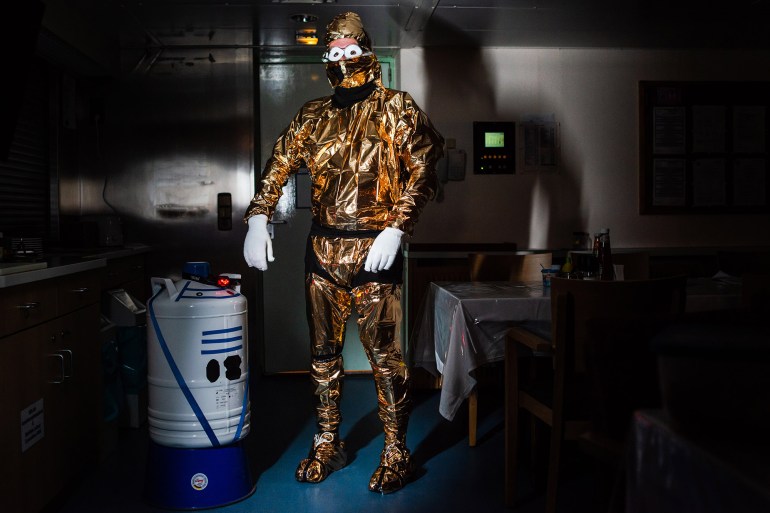
Between days packed with serious research and analytics, crew members still found time to participate in Halloween parties — and costumes were mandatory. Here, we see a researcher dressed up as C-3PO (accompanied by R2-D2 , naturally!) headed out for a fun night on the deck.
Whether they were marked by parties like these or by unforeseen natural developments, no two weeks in the Arctic were the same. “Polar bears visited us, the sea ice broke, we had strong storms, scientific stations drifted away,” Horvath says. “Our daily routines immediately were canceled, and we had to adjust ourselves to the situation.” Some events were scarier than others, but all required inventive use of materials to solve the issue at hand.
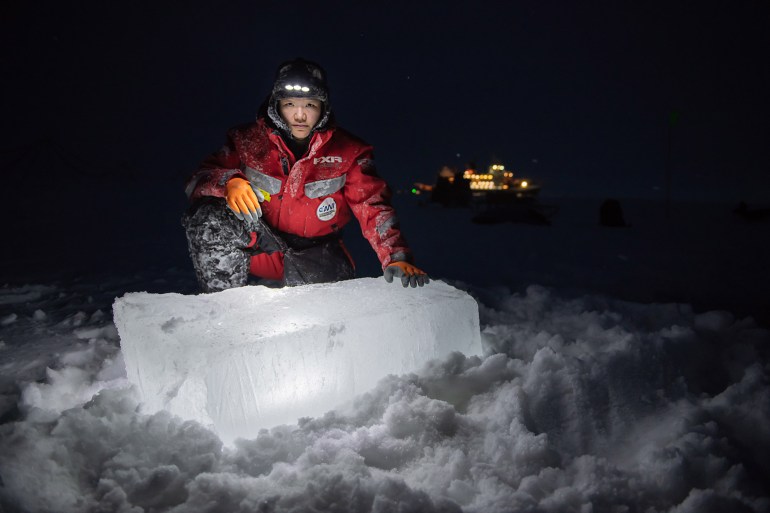
On days when massive winds weren’t threatening to blow away their equipment, each expert spent as many hours as possible gathering data and performing their designated tasks. In order to cut out the block of ice pictured above, this researcher had to go through extensive chainsaw training.
Thanks to such exhausting efforts, scientists were able to take measurements as deep as 4,297 meters — or 14,098 feet — below the ocean’s surface and submerge underwater cameras that showed how warming waters are causing more and more fish to migrate north. Over time, Horvath became fascinated with the scientists’ relentless dedication to expanding our knowledge of Earth’s systems despite the extremely challenging conditions. This, she says, requires immense mental and physical strength.
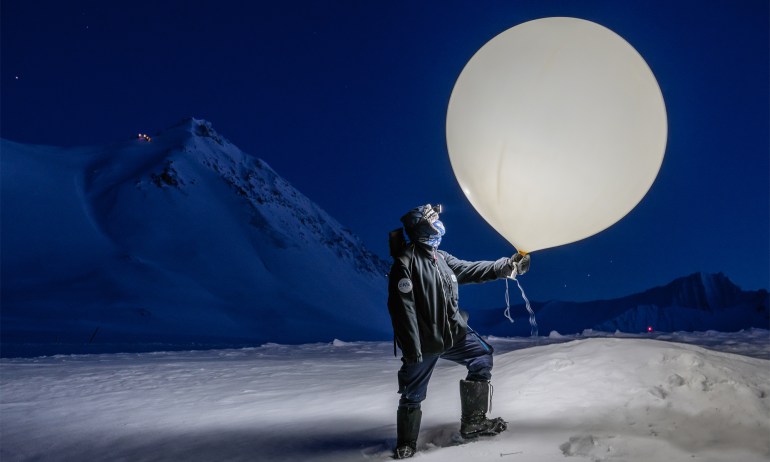
Standing gallantly above with her trusty weather balloon is Bettina Haupt, station leader of the AWIPEV Arctic Research Station. While it can be difficult to identify the subjects of Horvath’s images due to their thick layers of coats and protective gear, many of the Arctic researchers photographed by her were women. Initially, this was largely unintentional.
Now, however, Horvath is using her latest project to highlight women Arctic researchers. Her “Women of Arctic Science” collection includes photographs of them with the scientific instrument or tool that best represents her field, along with text about her role in the Arctic, how it makes her feel, and why she does it. The series debuted at the Photoville Festival in New York City. “It’s a project of my heart,” Horvath says.
Watch Esther Horvath’s full TEDxKIT talk here:









